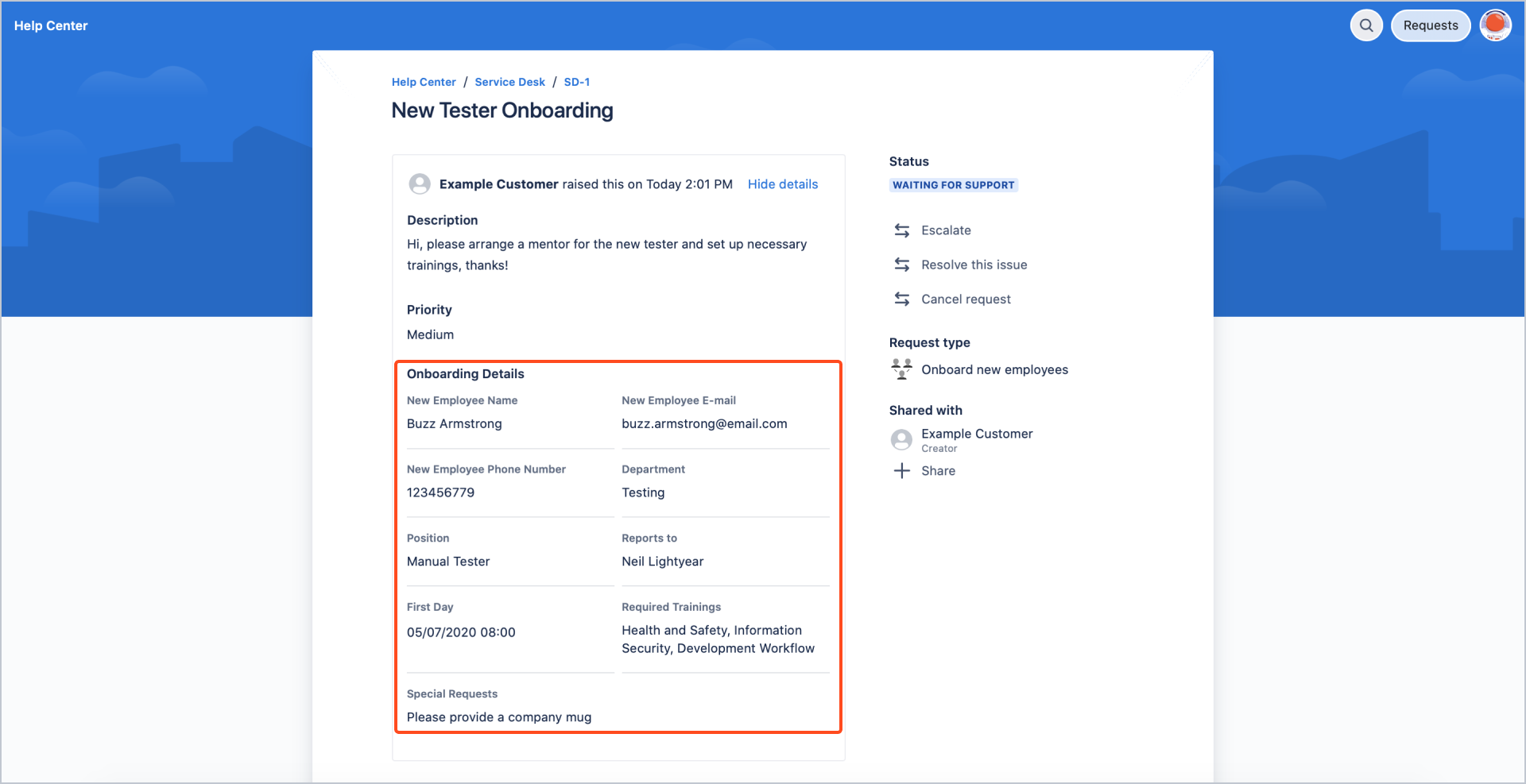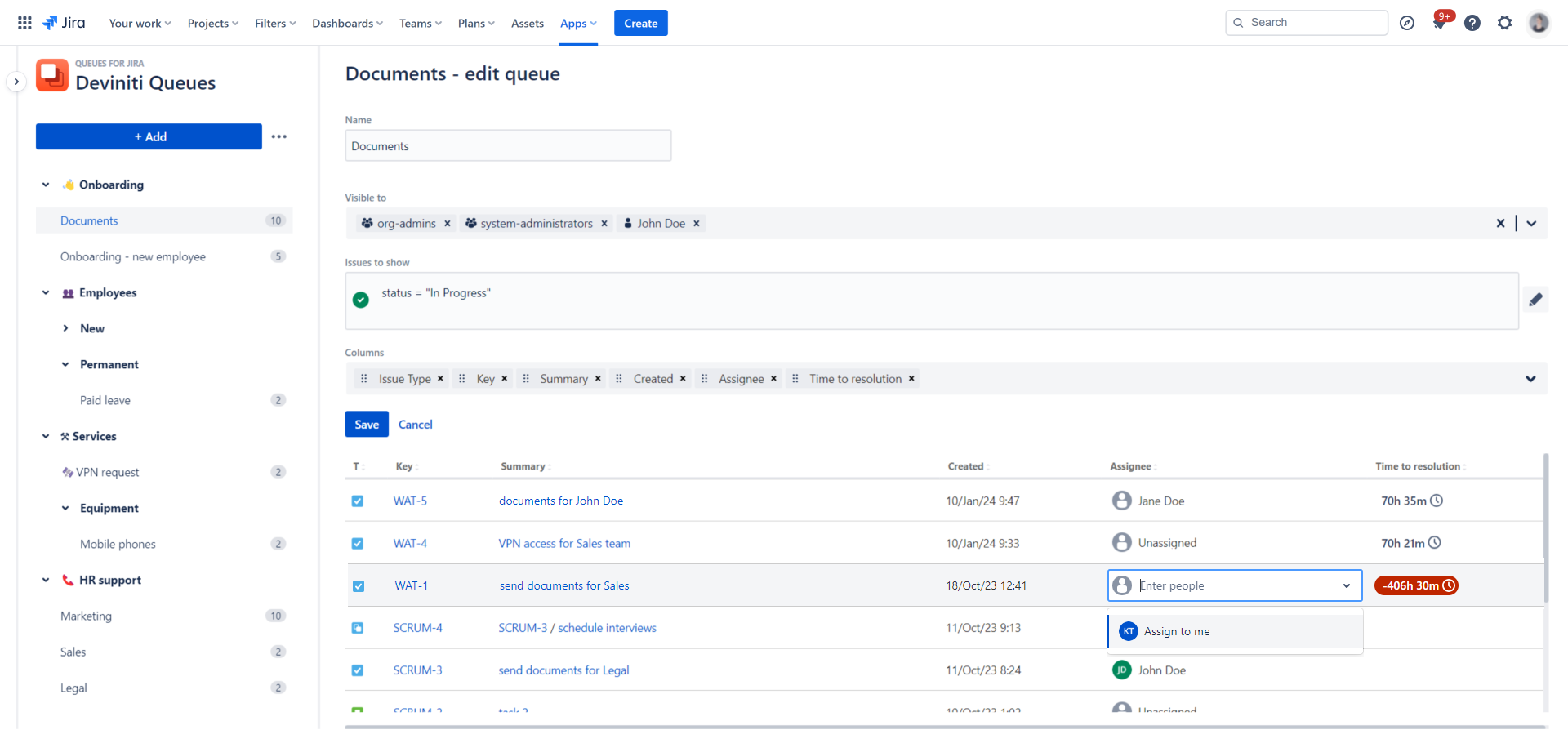5 strategies to enhance customer experience through better service transparency
Exceed your customers’ expectations with a few simple tips
A common challenge for companies in today’s saturated market is not only meeting customers’ expectations but also delighting them to foster loyalty. The tough part is that customers’ expectations seem to grow faster than companies can keep up with.
The good news, however, is that technology is also stepping up to the challenge.
Hear from our marketplace partners: Deviniti, codefortynine, K15t and Kolekti, on what customer experience means to them and why it is essential for business growth:
By using the right tools and focusing on transparency, you can narrow the gap between what customers expect and the services you provide. We’ll share tips that offer valuable insights on how to achieve this, helping you not just to meet but exceed your customers’ evolving needs. We’ll dive into how to make some strategic changes focused around ITSM and using ITIL practices (Information Technology Infrastructure Library: a set of practices and a framework for IT activities such as IT service management and IT asset management that focus on aligning IT services with the needs of the business).
But first, let’s answer an important question.
Why is customer experience critical for effective ITSM?
The way customers perceive and interact with IT services can make or break their relationship with a company. In the 2023 edition of State of the Connected Customer, Salesforce found that 80% of customers say the experience a company provides is as equally important as its products or services.
A positive customer experience (CX) not only fosters loyalty and retention but also shapes the reputation and brand perception in the market. Seeing that word-of-mouth and customer reviews have a big impact these days, making sure each interaction is positive becomes extremely important.
Customer feedback is an essential component in shaping and improving IT services. It’s a cyclical process where customer experience influences the service, and the service, in turn, enhances the customer experience.
In ITSM, it also acts as a differentiator. How a company interacts with its customers, understands their needs, and responds to their issues can set it apart from competitors. Take IBM or Zappos for example, they’re famous not only for their products and services but also for their customer service.
Companies selling products in a SaaS model need to continually make sure that their offerings keep getting better. Due to a subscription-based model, continual improvement of customer service is perceived as equally important.
A positive CX can also help organizations to become more agile and responsive to customer needs. This is because IT service management teams are able to identify and resolve customer issues more quickly and effectively, which can help to prevent disruptions to business operations.
The sooner the support agents know about a problem and the better they understand it, the more effectively they can respond to it. As a result, customer satisfaction increases and the company can focus on improving its products.
Last but not least, it can also lead to reduced costs. If fewer customers need to escalate their issues to higher-level support, it can save the organization a lot of money. Plus, a positive experience can reduce the need for customer churn, which can further reduce costs associated with acquisition and onboarding new customers.
Now, let’s move on to what you can do to achieve these results.
5 strategies for teams to exceed customer expectations
ITIL promotes making IT processes and services more transparent and visible. With this approach, organizations can keep a close eye on performance, quickly identify any areas that are causing delays, and decide how to improve their services effectively.
Implement these strategies to introduce more service transparency in your company.
- Optimize requests to match customers’ expectations
If you want to enhance customer experience quickly, consider optimizing requests in your customer portal. Make them shorter, easier to navigate, and personalized to your customers’ needs.
Using Extension for Jira Service Management, you can create request forms with specific fields optimized for specific customers. The Dynamic Forms feature then displays only the relevant fields, making filling the forms quick and easy.
The app also lets you bundle related fields and sub-fields so the entire request form is easily readable and transparent. And after a ticket is created, agents can analyze it much faster.

To go even further, you can display additional information on the request view. Linked issues, date and priority, SLA, and attachments are just a few options. That way, your customers can find the information they need without having to contact an agent.
- Give your clients more visibility and control
Transparent requests is one thing, but transparency in the entire My Requests page is an entirely different challenge. Customers who work with multiple requests at the same time need more visibility and control in managing the page.
Using My Requests Extension for Jira Service Management, they get a centralized view of all their requests and the ability to filter them based on their needs. The app provides customized filters and an option to add or remove columns. Customers can sort and find requests with ease.

The User Scopes feature allows you to easily decide which user or group of users can see and manage which requests. They can only access specific requests and don’t waste time on going through irrelevant information.
- Be transparent about the resolution time
There’s nothing more frustrating than waiting for an answer. Especially when the resolution of the problem can cost you a long downtime time and, subsequently, a lot of money. That’s why you need to clearly communicate Service Level Agreements (SLAs) to customers.
Using apps like Extension for Jira Service Management, you can display SLAs straight on the request view. That way, your clients will always know when they can expect help or an answer from you.
It’s like giving your clients the tool to check the actual state of service you provide. That brings about transparency and gains you your customers’ trust.
- Respond… yesterday
When thinking about the resolution times we go back to matching your clients expectations. Over 80% of customers expect companies to interact with them immediately.
Yet, in the Hubspot study, over 40% of agents and over 50% of low-growth and high-growth companies cited not enough time in a day as their biggest challenge.
Seeing such data it becomes clear that we need to do everything we can to help our agents reduce time-to-resolution. How to do so through better transparency?
Using Queues for Jira Service Management your agents can create cross-project queues with issues from different projects (JSM, Software, Business). Having them all in one view makes it easy to set priorities and resolve issues much faster.

To enhance transparency even further, these queues can be seen and managed by the users you choose (it isn’t restricted to JSM agents only). Admins can easily configure who can see which queue. That way, different teams like IT or HR, have access to relevant tickets only. Seeing that 83% of customers expect that complex issues will get resolved by a single agent, giving the right agents access to the right issues is vital.
- Embrace open communication
Nearly 90% of customers expect you to proactively contact them about their issues. They want you to regularly share updates on service status, incident resolution progress, and upcoming changes. They want to be in the loop.
By transparently communicating any delays and issues on the way to resolution, you create an image of a trusted partner.
Improve customer satisfaction levels through transparency
Open communication, optimization of requests and My Requests page, decreasing time-to-resolution, and SLA transparency are just a few of the ways to enhance customer experience through service transparency.
In the realm of customer experience, transparency is also key. If implemented the right way, it can bring many benefits:
- Customers are more informed about the status of their issues, leading to a calmer, more reassured experience. As a result, they don’t feel the need to escalate the issue.
- Monitoring progress and answering questions from both parties (e.g. for additional information) gets easier.
- Transparency provides context. For example, customers can see the number of requests similar to theirs, helping them understand that their problem might not be unique.
- Service becomes more efficient. Specific, relevant information needed to resolve an issue is collected and displayed clearly. This ensures that customers know what information they need to provide, and the service team knows exactly what is expected.
Adopting transparency, you create a win-win situation: Customers feel more involved and informed, while the service team can operate more efficiently.
By making IT operations transparent and visible, organizations not only streamline their services but also foster a deeper trust with their customers. Meeting their expectations then becomes not only achievable, but easy to do.
As an Atlassian Platinum and Enterprise Solutions Partner, Deviniti provides a suite of apps for Atlassian products that help clients all over the globe boost their operations.
Learn how you can enhance ITSM customer service with Deviniti’s Extension for Jira Service Management app. Streamline processes and optimize your Customer Portal in line with your clients’ needs. Create targeted request forms with Dynamic Forms for efficiency and clarity, enabling quicker agent response and improved customer satisfaction.
Learn more about Extension for Jira and our other ITSM-related apps!
Check out these helpful Marketplace apps to resource teams and boost productivity:
Extension for Jira Service Management – enhance your ITSM customer experience to delight your customers with this app from Deviniti
Deep Clone for Jira – Start saving time with powerful cloning tools to clone epics, bulk clone and copy project templates with this app from codefortynine
Scroll Viewport – Create intuitive help centers and beautiful web pages in Confluence with scroll apps from K15t
Content Formatting Macros – Help your teams work more effectively with this essential Confluence macro toolkit from Kolekti
Sources
State of the Connected Customer, Salesforce, 2023
The State of Customer Service, Hubspot, 2022
